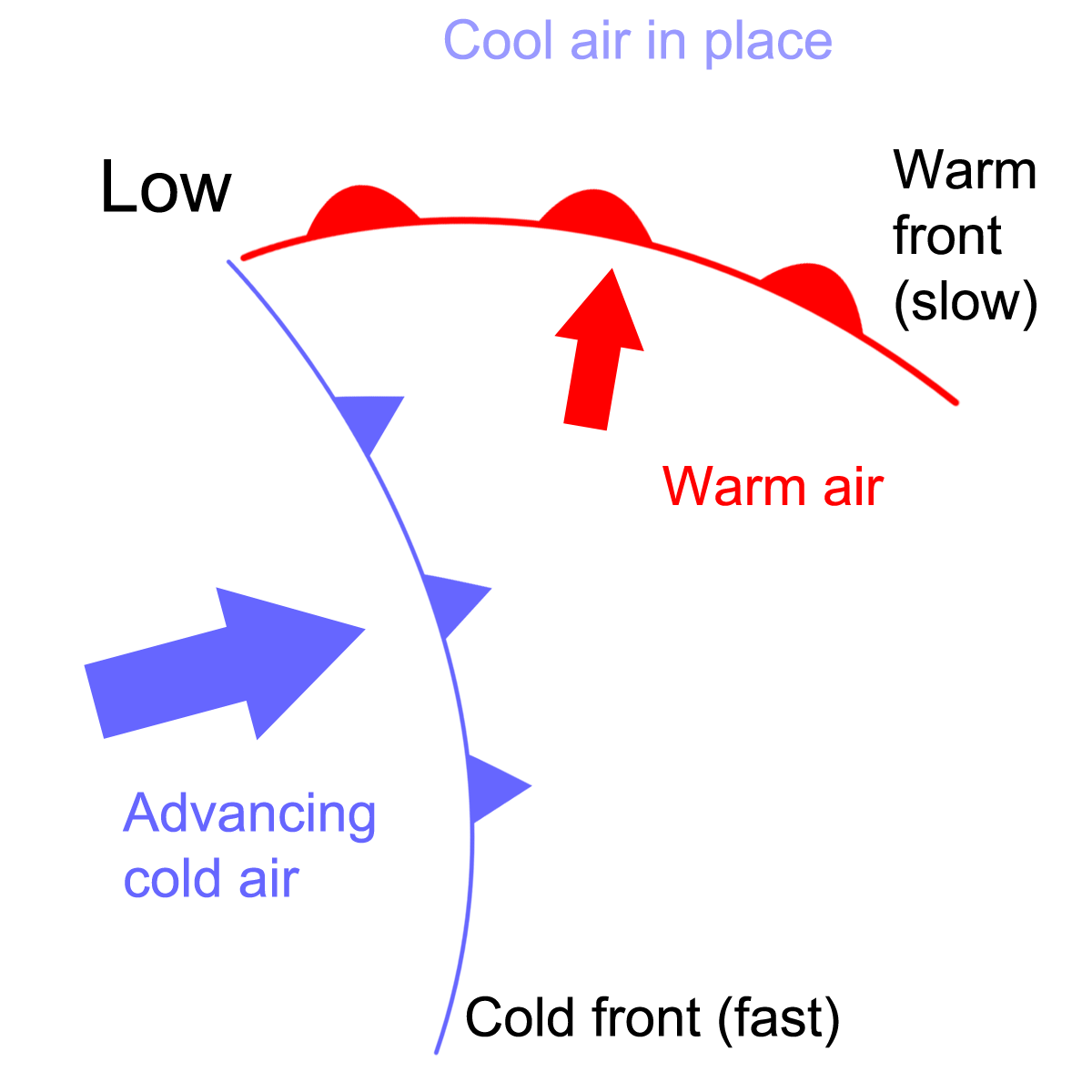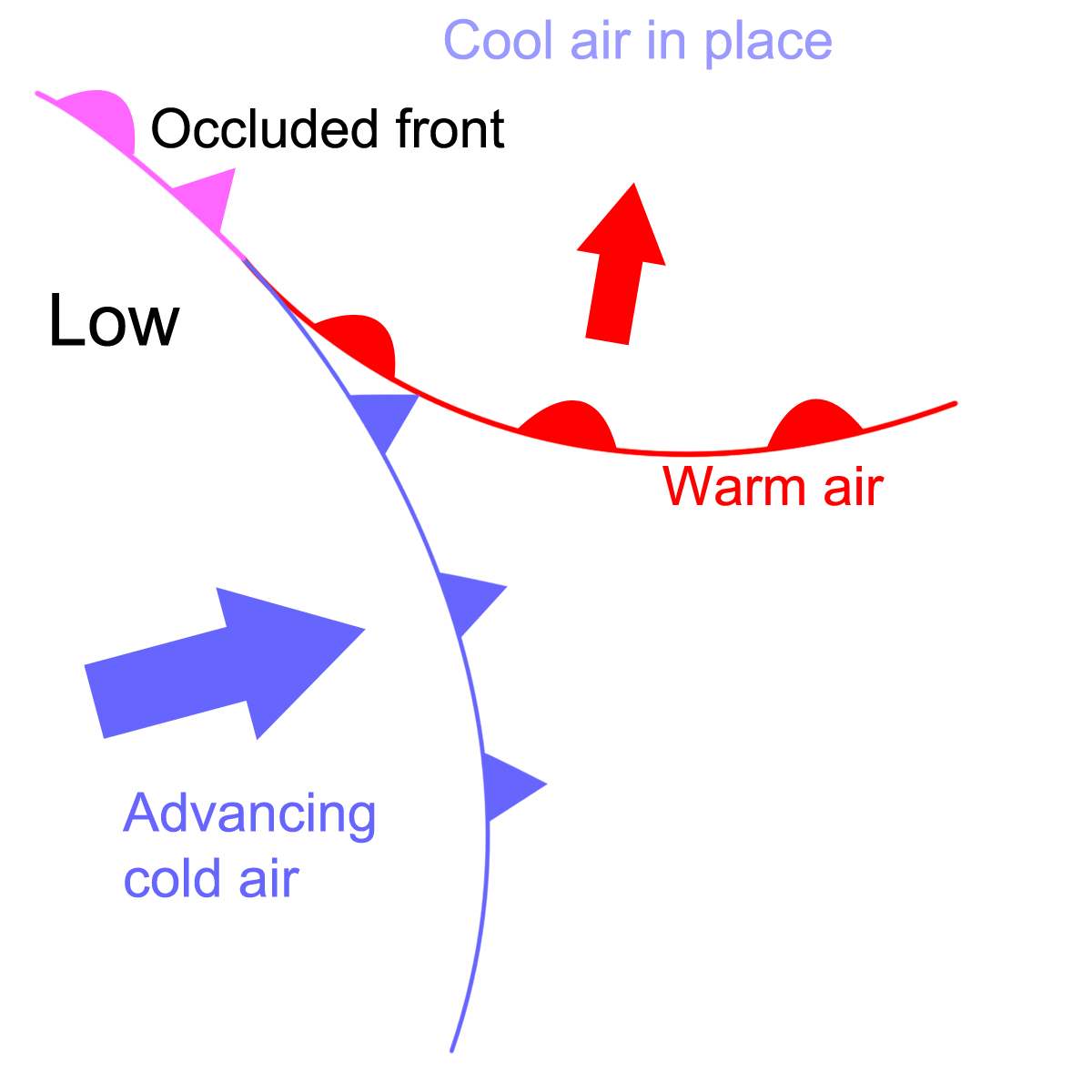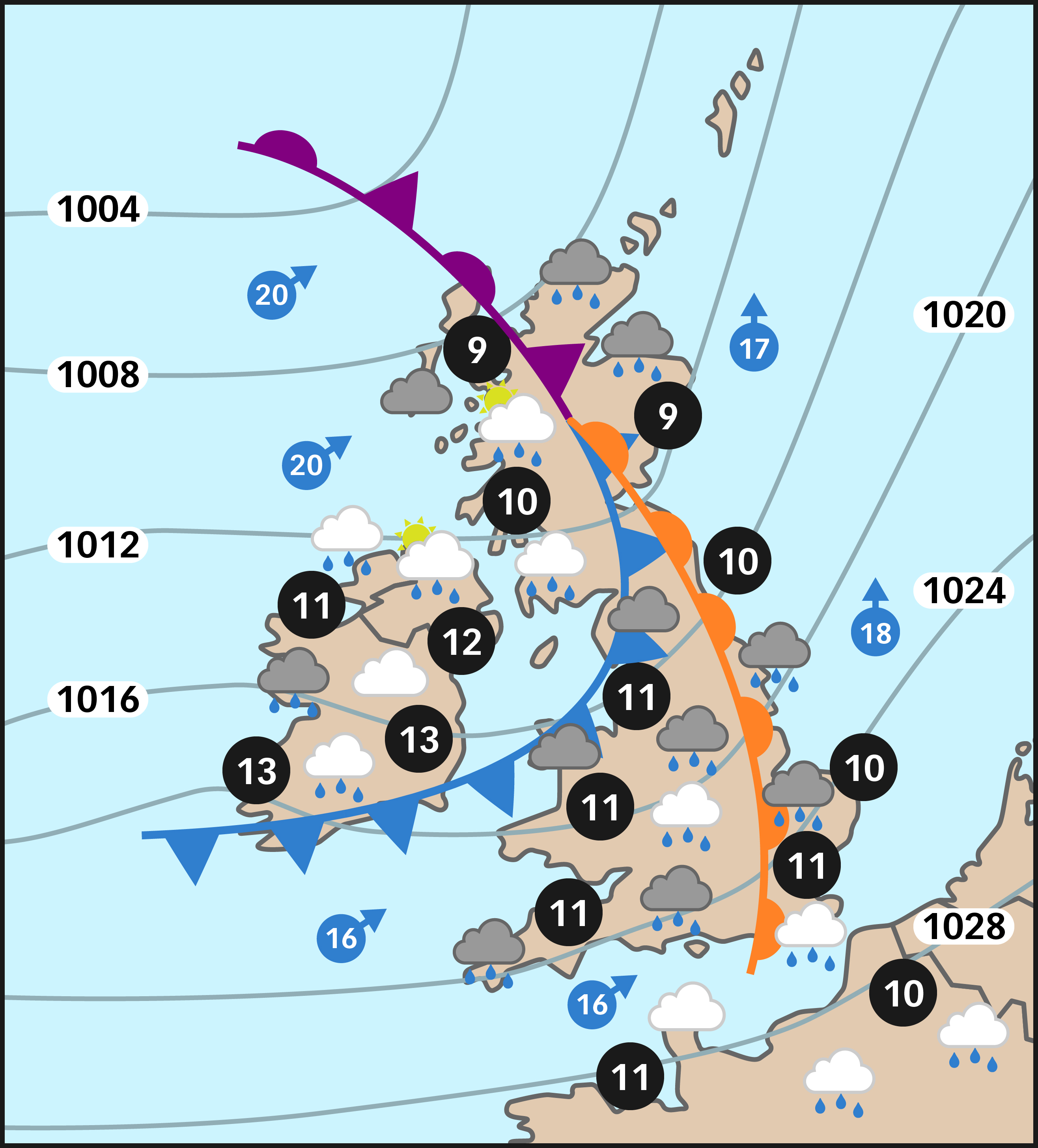What is an Occluded Front?
Occluded fronts are linked with areas of low pressure called depressions (more on these soon!). When a depression forms, there is usually a warm front and a faster moving cold front. The diagram below shows this. To the north of the warm front is the cool air that was in the area before the depression developed:

The warm air mass is replacing this cool air and at its leading edge is a warm front.
As the depression intensifies, the cold front catches up with the warm front (remember it moves faster than the warm front). This is shown below. The line where the two fronts meet is called an occluded front:

When an occluded front passes overhead, you would feel changes in temperature and wind speed. Occluded fronts can generate quite stormy weather as they pass over.
We are now going to look at a weather map from the Telegraph web site. This will help us understand how to recognise an occluded front.
